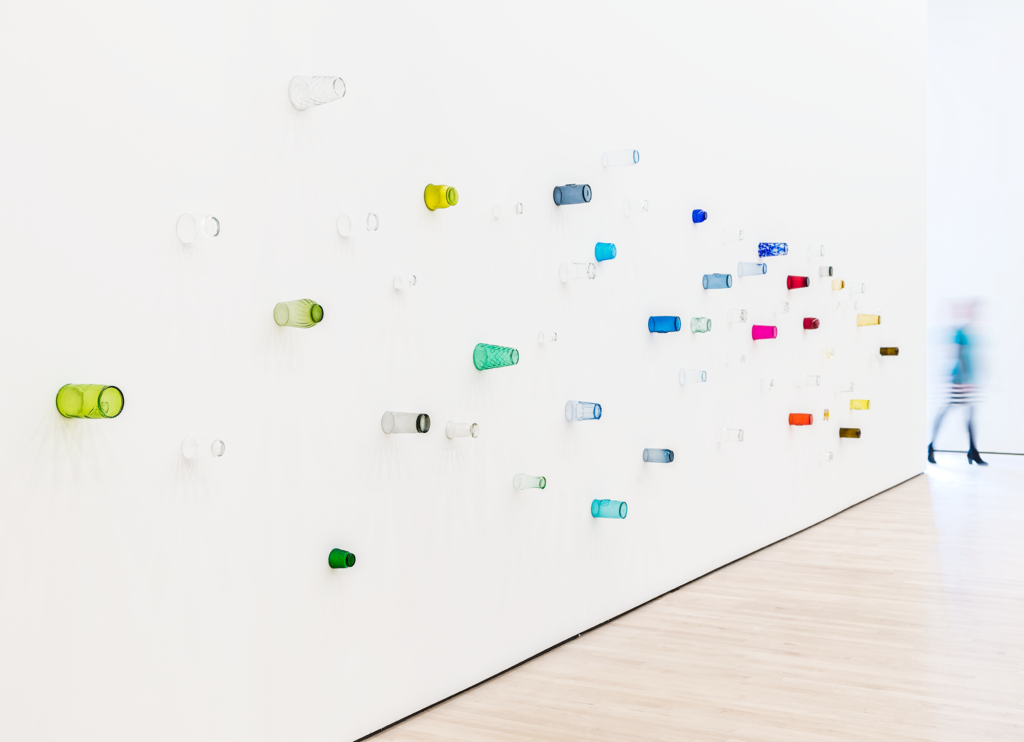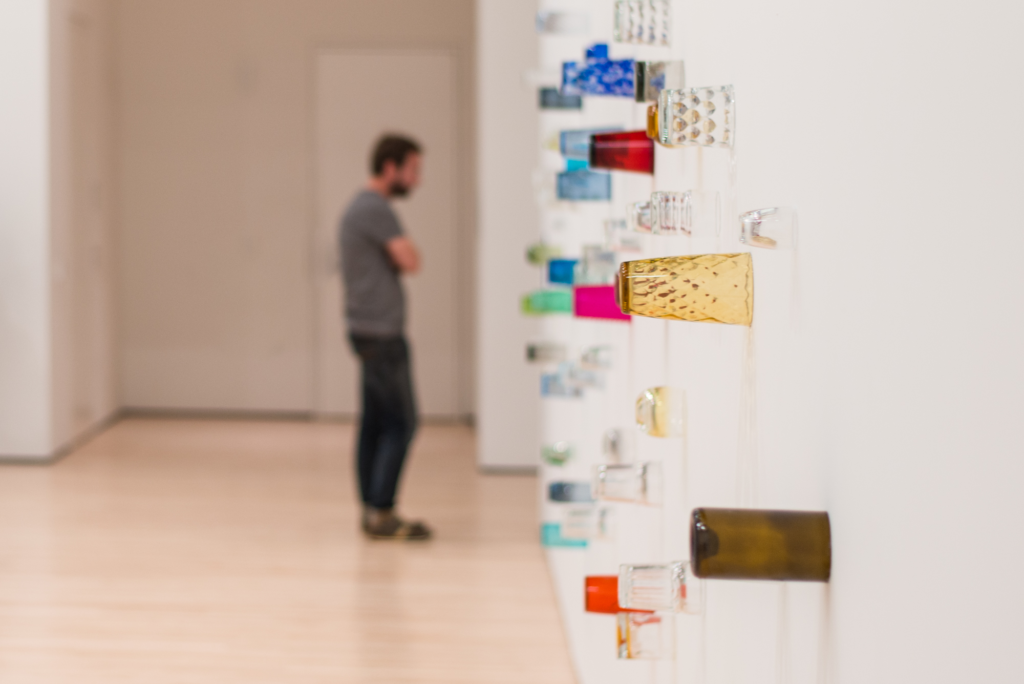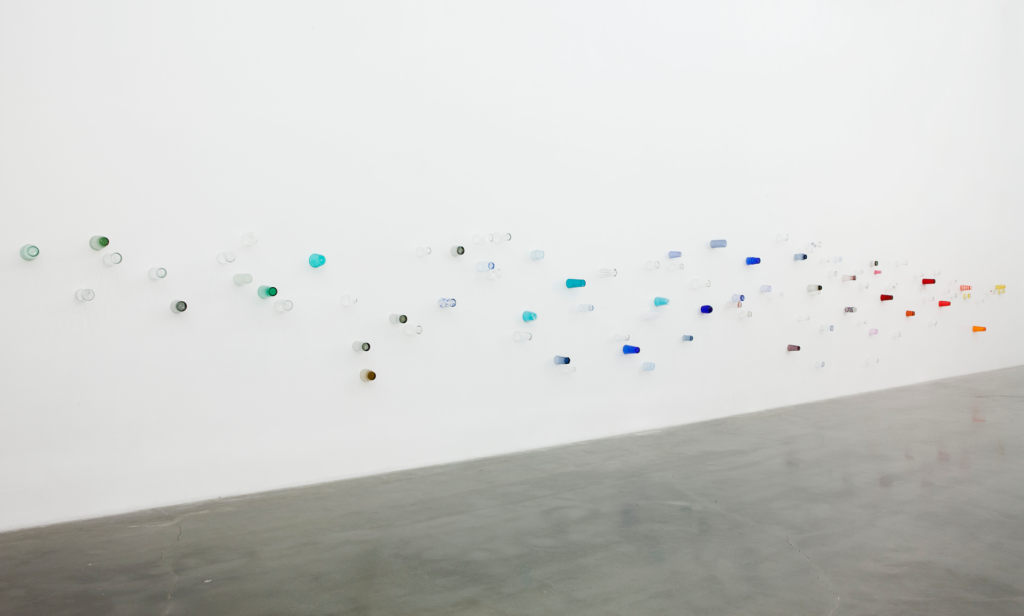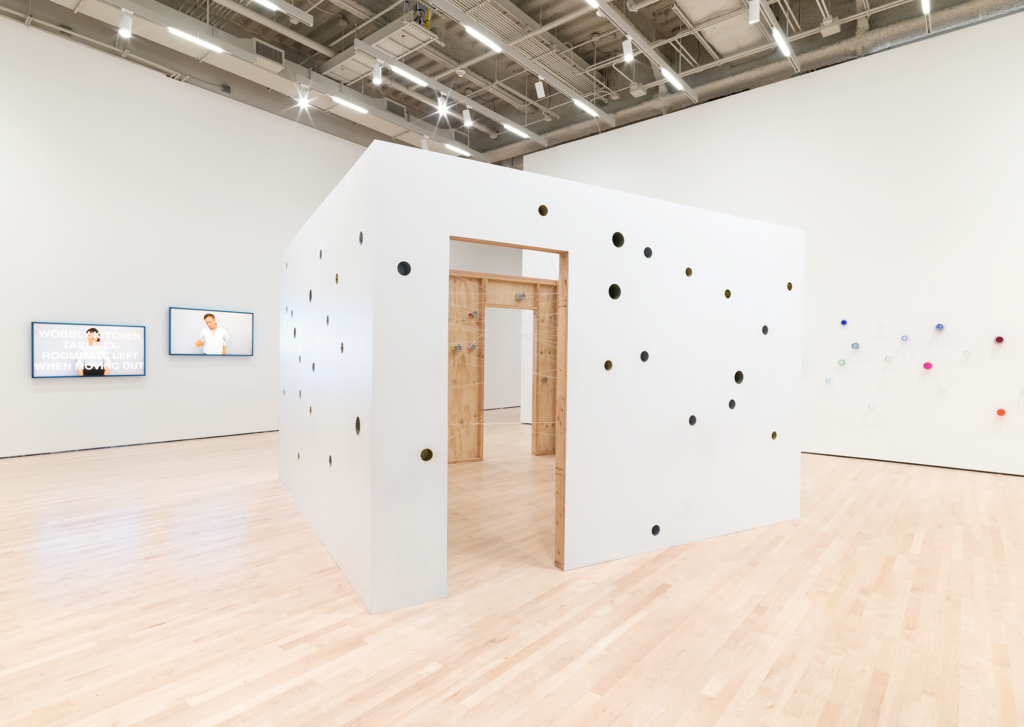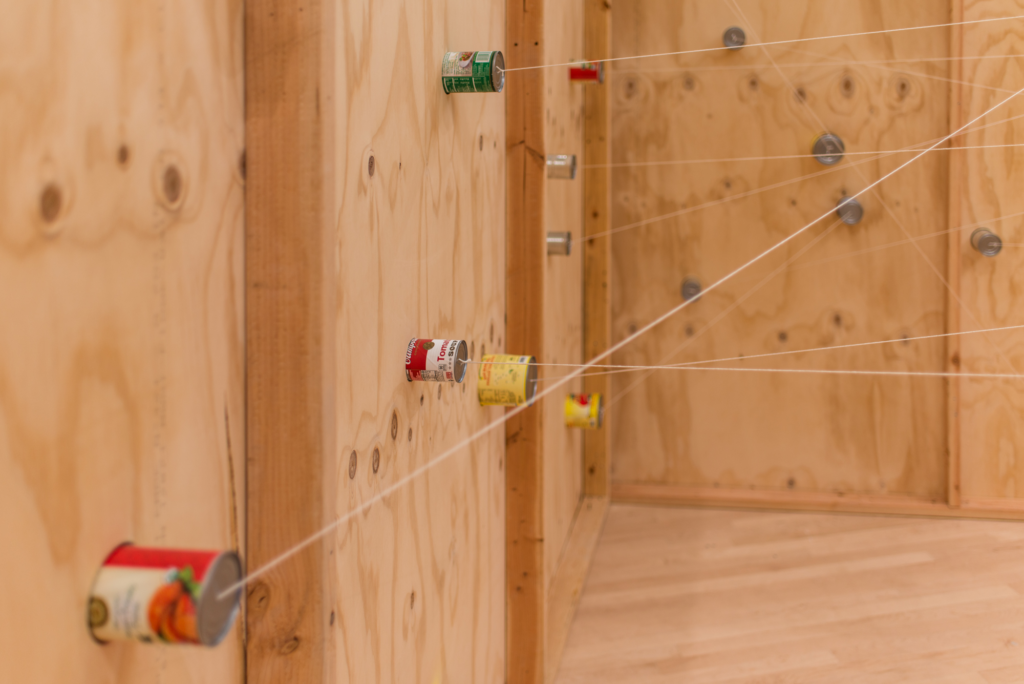Eavesdropping, 2011
Placing your ear against the bottom of a drinking glass pressed against a wall, you hope to overhear voices or distant sounds in the unseen space opposite. An acoustic coupling occurs between wall and glass as sound waves travel through. In Amalia Pica’s performance Eavesdropper (2011), someone else can be observed in this position of attempting to listen in. When the performer leaves the gallery, the glass remains glued to the wall. With the installation Eavesdropping (2011), this prop is multiplied into a formal arrangement of delicately affixed found colored and clear glasses. An otherwise private mode of spying becomes a social and public act, as you find yourself, surrounded by fellow visitors, encountering this work.
Switchboard (pavilion), 2014
The mechanisms by which listening can be attempted through simple sound wave transmission are similarly reflected in the installation Switchboard (pavilion) (2014). In both works the appearance of surface connectivity invites visitor participation, but the expected experience is frustrated: you will probably hear nothing but the noises around you and perhaps those created inside your pressed ear. In Switchboard (pavilion), the childhood game of creating an improvised telephone using tin cans and string becomes an absurd and daunting puzzle. Circular openings on the pavilion’s exterior beckon you to listen. Peek inside the pavilion’s doorways, and you discover a randomly determined constellation of crisscrossed cords, a sculptural analogy to the complex infrastructure behind old manual telephone switchboard systems. Direct communication to other curious participants appears possible over the relatively short distance from one side of the pavilion to the other, but its actuality is playfully complicated by the imposed visual separation between a speaker and an addressee: you are never sure which of the many cans embedded in the freestanding walls of this room will connect you to someone on the other end. Indeed, there are always potential failures and limits to effective communication—things forgotten, misunderstood, and even censored—despite the seeming ease and ubiquity of new technologies and platforms. The artist has described the piece as a machine for losing stories.1
Pica’s work considers the performative nature of listening and interpretation. Most of her projects exploring the shared visual codes associated with verbal and nonverbal language systems, from telegraphic code to semaphore flags, have done so through low-tech materials and everyday objects, and without an audio component. She has also often incorporated signifiers of collective expression and cultural celebration such as fiesta lightbulbs, bunting, garlands, and confetti.
Through Eavesdropping and Switchboard (pavilion), Pica calls attention to the white cube of the gallery context and expands on the parallels she has drawn between communication through art and communication through other means. Pica has expressed a particular interest in the artist’s capacity to convey messages through the translation of thought into action. The recurrent figure of the potential listener and the object as a communicative tool suggests a metaphorical relationship to audience reception. “For me, the literal, physical distance from the source of the communicative attempt to the potential receiver is also the metaphorical distance,” notes Pica.2 Distance becomes a metaphor for art making as well as a guide for the artist when organizing works in a space. For the London-based Argentine artist, it can carry a romantic aspect as well, for “that which we no longer see gives way to the imaginary in the social or political realm.”3
— Tanya Zimbardo
Notes
- Amalia Pica, email to author, April 2017.
- Amalia Pica in “Who’s Afraid of a Vector: Amalia Pica, João Ribas, and Julie Rodrigues Widholm” (interview), in Amalia Pica, exh. cat. (Chicago: Museum of Contemporary Art, 2013), 18.
- Ibid.
